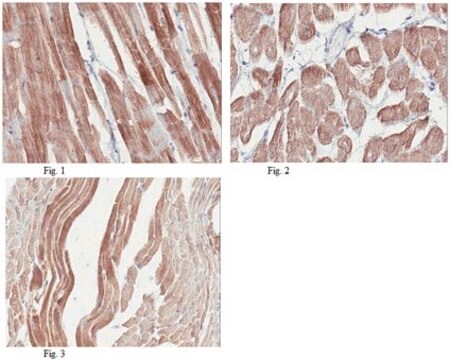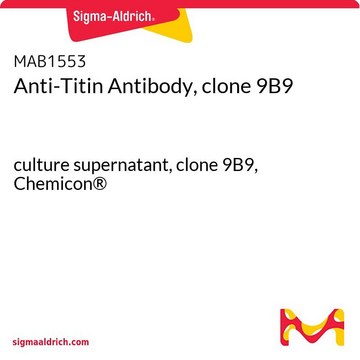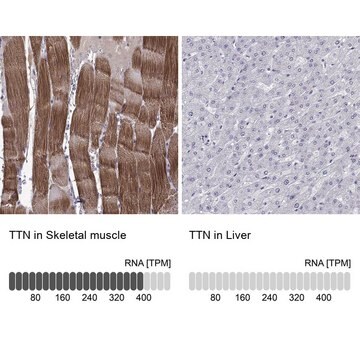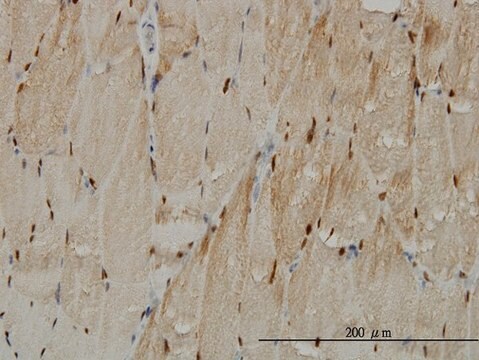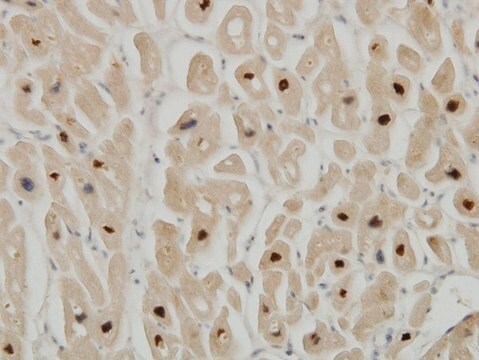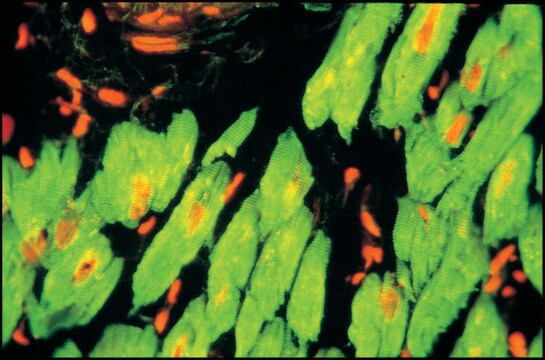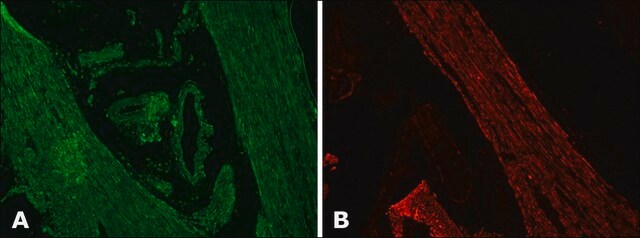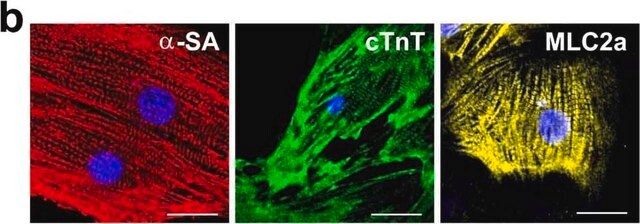T9030
Monoclonal Anti-Titin antibody produced in mouse
clone T11, ascites fluid
Synonim(y):
Anti-TMD, Anty-CMD1G, Anty-CMH9, Anty-CMPD4, Anty-EOMFC, Anty-HMERF, Anty-LGMD2J, Anty-LGMDR10, Anty-MYLK5, Anty-SALMY
About This Item
Polecane produkty
pochodzenie biologiczne
mouse
białko sprzężone
unconjugated
forma przeciwciała
ascites fluid
rodzaj przeciwciała
primary antibodies
klon
T11, monoclonal
zawiera
15 mM sodium azide
reaktywność gatunkowa
vertebrates, chicken
metody
electron microscopy: suitable
immunohistochemistry (frozen sections): suitable
indirect immunofluorescence: 1:1,000 using frozen tissue sections of animal skeletal muscle
western blot: suitable
izotyp
IgG2b
Warunki transportu
dry ice
temp. przechowywania
−20°C
docelowa modyfikacja potranslacyjna
unmodified
informacje o genach
chicken ... TTN(424126)
Powiązane kategorie
Opis ogólny
Specyficzność
Immunogen
Zastosowanie
- western blotting
- antibody staining
- immunofluorescence microscopy
- immunohistochemistry
Działania biochem./fizjol.
Oświadczenie o zrzeczeniu się odpowiedzialności
Nie możesz znaleźć właściwego produktu?
Wypróbuj nasz Narzędzie selektora produktów.
Kod klasy składowania
12 - Non Combustible Liquids
Klasa zagrożenia wodnego (WGK)
nwg
Temperatura zapłonu (°F)
Not applicable
Temperatura zapłonu (°C)
Not applicable
Wybierz jedną z najnowszych wersji:
Masz już ten produkt?
Dokumenty związane z niedawno zakupionymi produktami zostały zamieszczone w Bibliotece dokumentów.
Klienci oglądali również te produkty
Nasz zespół naukowców ma doświadczenie we wszystkich obszarach badań, w tym w naukach przyrodniczych, materiałoznawstwie, syntezie chemicznej, chromatografii, analityce i wielu innych dziedzinach.
Skontaktuj się z zespołem ds. pomocy technicznej